A few days ago, in the article dedicated to Neolithic protowriting found in tortoise shells, we reviewed its resemblance to the oracular bones of Shang China. But it is possible that some reader has been left with the doubt and the corresponding questions arise:what exactly were those objects? What time period are they in? What was its origin? And its usefulness?
Although they are called bones, they actually also include plastrons (tortoise shells), as we saw, although it is true that bone material predominates and, more specifically, the shoulder blades (although there is no lack of cranial vaults, ribs...) of cattle, sheep , horses and pigs, as well as wild animals and even some isolated human cases.
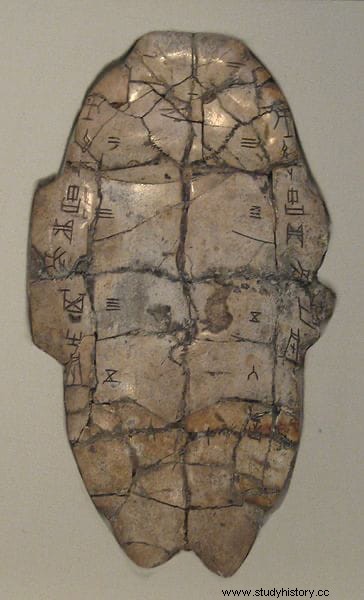
Probably from specimens sacrificed for religious reasons. What is truly curious and interesting, beyond their vast age of several thousand years, is that they were used as a support for writing at a time when paper or anything similar had not yet been invented. Therefore, it can be said that oracular bones are essentially written documents.
The first written documents in China, since the ceramic incisions are earlier but do not use an articulate language. Here yes, although in an ideographic system of about four thousand characters (of which three thousand have been deciphered) with which magical and pyromantic rituals are narrated, captured with a brush, sometimes with previous engraving and after polishing the surface.
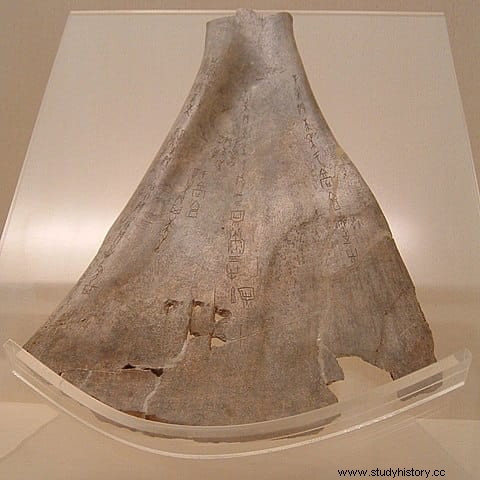
Pyromancy was the art of divination (hence the oracular) through the interpretation of colors, the clicking of bones when heated or the shape that flames take; the pictograms imitated the way the bone remained after it was broken and it was buried in an ad hoc grave . Although we find this form of omen in the classical world (in ancient Greece it was practiced by the priestesses of Athena and Hephaestus), its relationship with bones in China was a tradition that dates back to the Neolithic.
To locate ourselves, we have to go to the Yellow River valley, an area between the northern half of the current Henan province and the southern half of Hebei, the western part of Shandong, the northernmost area of Anhui and the northwest of Jiangsu. That was the territory that was under the domain of the Shang dynasty, also called Yin, considered the second in the history of China and the first in documented existence, since of its predecessor, the legendary Xia, there are no texts and only the record The archaeological site allows it to be identified with a post-Neolithic bronze culture.
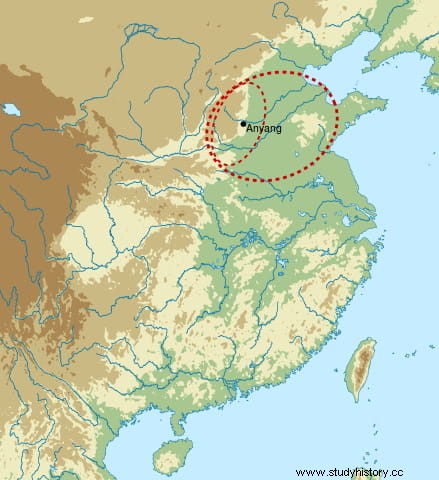
The Shang, who would have overthrown and supplanted the Xia thanks to their higher degree of civilization -mainly the improvement of agriculture-, have oracular bones as one of their main signs, thus being the inventors of the oldest form of Chinese writing. which is preserved. Some two hundred thousand pieces have been found with these archaic signs inscribed with the aforementioned prophetic character (with a pattern that is repeated:question, answer and confirmation of the result), which provide researchers with valuable information on aspects of that culture:politics, economy , art, religion, etc.
Although this material was produced only in the last two and a quarter centuries of the Shang period (about 3,200 years ago), it is of great value because it has provided a complete genealogy of the dynasty, which had thirty rulers. However, the dating is somewhat confusing, since historians do not agree on the date when the Shang were replaced by the next dynasty, that of the Zhou; that moment is usually placed around the year 1122 BC, so the oracular bones would be placed between the 14th and 11th centuries BC. C. approximately, putting as maximum date the year 1050 B.C.
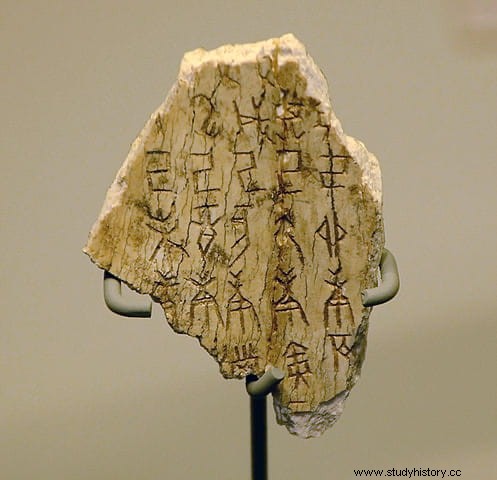
In fact, most of the unearthed pieces correspond to the reign of Wo Ding, the fifth on the list, extending to that of Di Xin, the last. Before these characters there are no oracular bones -or they have not been found yet- and afterwards they are very scarce, almost testimonial, because the augurs changed their technique and adopted divination using the seeds of the yarrow herb and, above all, the consultation of the I Ching (a cosmogonic book from which the predictions were extracted by combining the figures of a numerical system with other arithmetical and geometric ones written in the sixty-four hexagrams of its pages).
This caused the oracular bones to fall into oblivion during the following centuries and it was necessary to wait for the XIX century of our era so that, as happens so often in archaeology, a chance allowed them to be recovered from destruction. It was a high official of the Quing dynasty named Wáng Yìróng who in 1899, ill with malaria, prepared the corresponding medicine at home, helped by his friend Liú É. The traditional remedy for this disease consisted of making the drug by crushing what were popularly known as dragon bones, which could be purchased in any market.
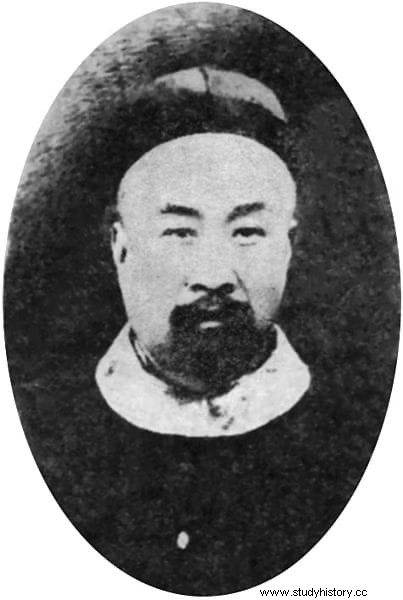
Dragon bones were found and dug up on farmland by peasants, who sold them as such for their pharmacological function or to keep swords and other weapons sharp. The fact is that, during the grinding of the bones, Wáng Yìróng and Liú É, both scholars, noticed that some had incised characters that seemed very similar to those they had seen on old bronze plates. After studying them for a while, Liu É would publish a book on the subject that opened the door to his scientific consideration.
Dozens of archaeological campaigns were conducted and scholars scoured the markets buying dragon bones (which sometimes turned out to be fake). The main quarry was located in Anyang, where the Chinese archaeologist Li Ji found between 1928 and 1937 about twenty thousand specimens that shed much light on the Shang not only because of the texts themselves but also because they allowed the first material remains of that dynasty to be discovered. in Xiaotung, and Yin Shu, beyond the uncertain documentary references in the Historical Memoirs of the chronicler Han Sima Qian. Today they make up the bulk of the collection of the Academia Sinica in Taiwan, which has approximately ten percent of the existing total.
